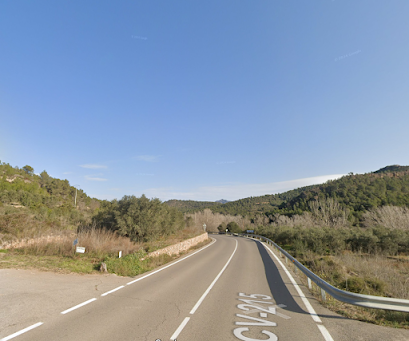Incompetent, despotic and short-sighted
It is going a day to appreciate ou gentle rise of 50m as we walk along to Vall de Almonacid. We will not go into the village today so we will do the overview later.
What might we talk of given the general lack of little bars. The Carlist Wars are things which I suppose pass by the average British reader. With so many other things going on in the world they have been reduced to footnotes. I suppose the idea of succession wars around the Hanoverians might strike the sort of people who wargame ‘A Very British Civil War’. As we have seen, they have left a bit of military architecture about, so maybe we ought to talk about them.
When King Ferdinand VII died - to quote wiki ‘some historians regard him as incompetent, despotic and short-sighted’ - his widow, Queen Maria Cristina became regent on behalf of their daughter, Queen Isabella II. Liberals rallied to her cause. The Carlists rallied to Isabella II’s uncle, Don Carlos. The banner cause was that Salic Law applied and girls were not allowed to inherit. Carlism was a broad church of those dissatisfied with the Government, Liberalism, the rights of non-Castillians and the position of the church.
The First Carlist War (1833–1840) saw fighting spanned most of the country but the main conflict centered on the Carlist homelands of the Basque Country and Aragon, Catalonia and Valencia, as we’ve noted..
The Second Carlist War (1846–1849) was a bit of a damp squib. A small Catalan uprising. The rebels attempted to install Carlos, Count of Montemolín on the throne. In Galicia, an even smaller-scale uprising was put down by General Ramón María Narváez.
The Third Carlist War (1872–1876) began when Queen Isabella II was overthrown by a conspiracy of liberal generals in 1868. The Cortes replaced her with Amadeo, the Duke of Aosta (and second son of King Victor Emmanuel II of Italy). When the 1872 elections resulted in a swing away from Carlism, the Carlist pretender, Carlos VII, decided that only force of arms could win him the throne. It didn’t end well for him.
Oh well, on to Vall de Almonacid. About 290 people live here. Things have been fairly stable since 1981 It was three times bigger in the 1900s. 40% of the pueblo is covered with crops, especially olives. Apparently they produce 500,000kg olives. It has been a PP pueblo since 1995. Since 2003 Antonio José Cases Mollar has been mayor. He has a facebook page and 1000 friends https://www.facebook.com/antoniojose.casesmollar/ The place celebrates Saint Giles’ day. I know he is a 7th century Frenchman, however, Saint Giles sounds terribly English.
Tomorrow we will go for a wander.











Comments
Post a Comment